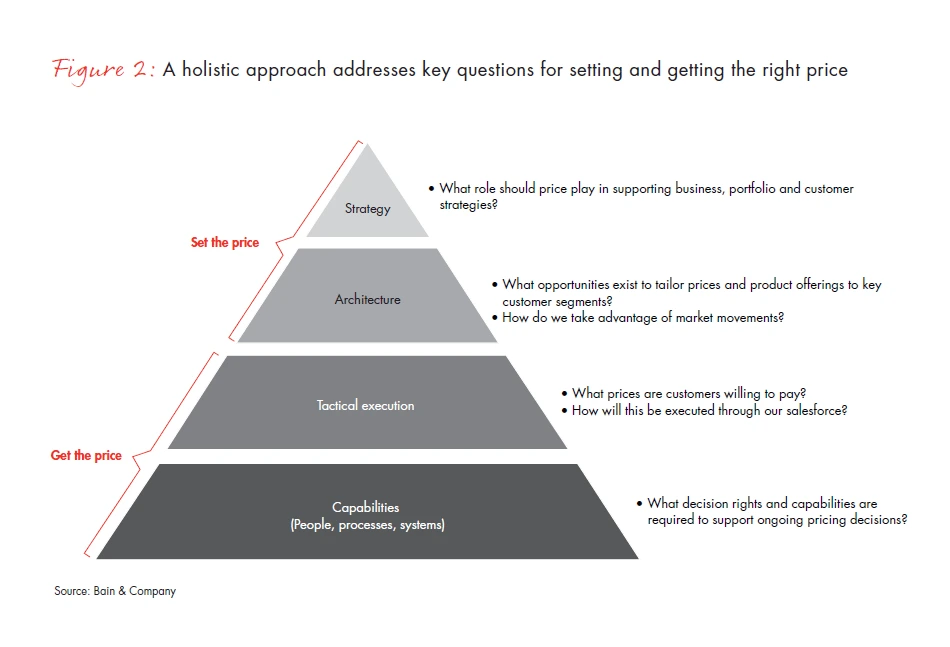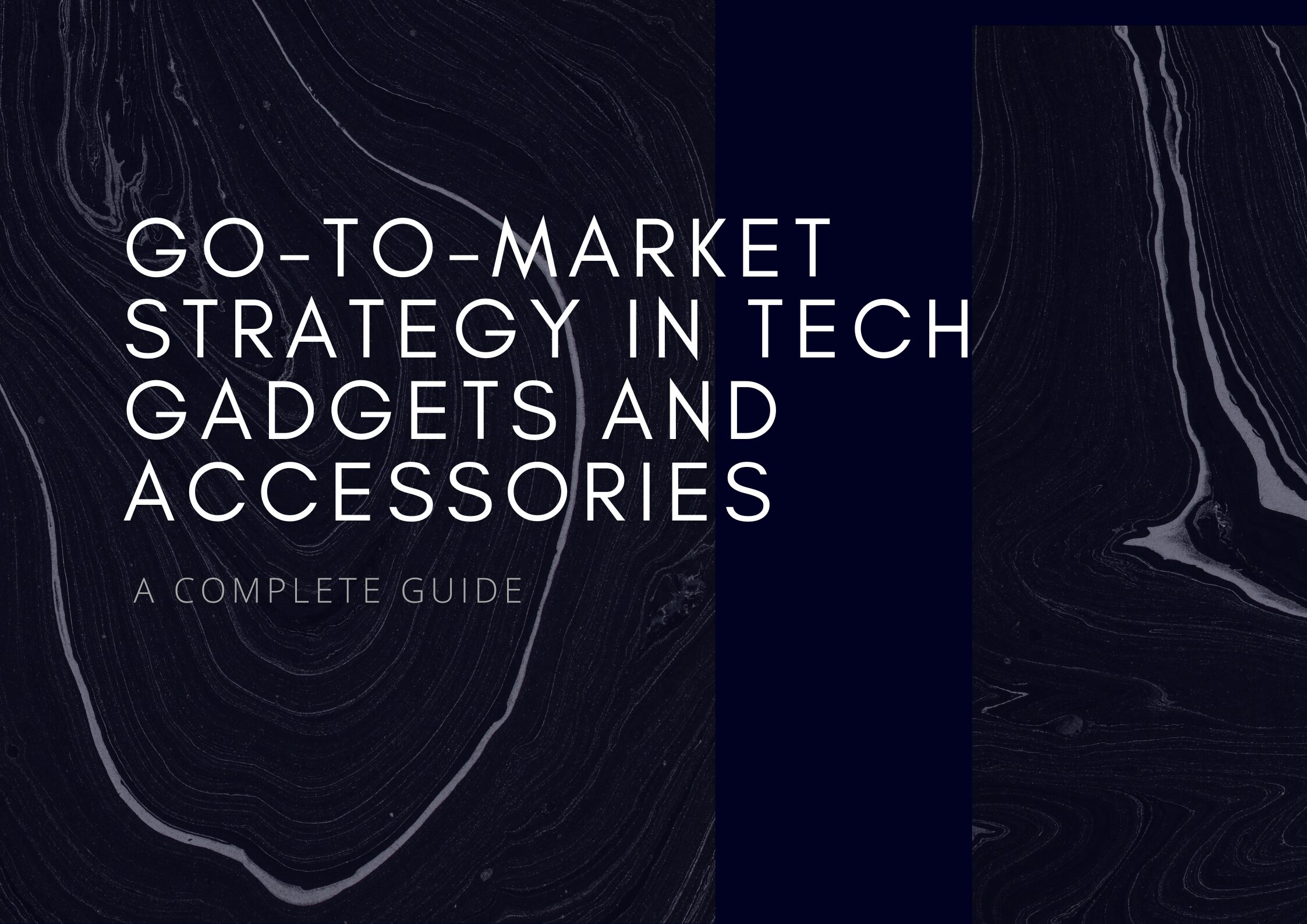In the dynamic realm of tech gadgets and accessories, a well-crafted Go-To-Market (GTM) strategy is paramount to achieving visibility, driving sales, and sustaining growth. Here’s a comprehensive blueprint to create and execute an effective GTM strategy that integrates market analysis, strategic positioning, and targeted promotion.
Market Analysis and Target Audience Identification
Before launching your tech gadgets, conduct meticulous market research to uncover consumer preferences, emerging trends, and competitive insights. Define precise target audience segments based on demographics, behaviors, and psychographics relevant to tech enthusiasts and early adopters.
Market Analysis
- Consumer Preferences and Trends:
- Start by researching current consumer preferences and trends in the tech gadgets and accessories sector. Understand what features, functionalities, and designs appeal most to your potential customers.
- Look into emerging trends such as AI integration, smart home compatibility, eco-friendly materials, or innovations in wearable technology. These insights will help you align your product offerings with market demands.
- Competitive Insights:
- Analyze your competitors to gain a clear understanding of their product offerings, pricing strategies, distribution channels, and marketing tactics.
- Identify gaps in the market where your products can offer unique value or where competitors may be underserving specific customer needs.
- Market Size and Growth Opportunities:
- Assess the overall market size and growth projections for tech gadgets and accessories. This includes understanding market segments (e.g., consumer electronics, smart devices, mobile accessories) and potential niches within these segments.
- Look for opportunities in expanding markets or emerging consumer demographics that align with your product offerings.

Target Audience Identification
- Demographics:
- Define your target audience based on demographic factors such as age, gender, income level, education, occupation, and geographic location.
- For example, tech enthusiasts might include younger adults aged 25-40 with disposable income, whereas early adopters could be professionals seeking cutting-edge technology solutions.
- Behaviors and Psychographics:
- Understand the behavioral patterns and psychographic traits of your target audience. This includes their lifestyle choices, interests, values, and attitudes towards technology.
- Determine how they use tech gadgets in their daily lives, their preferred purchasing channels (online vs. offline), and their willingness to adopt new technologies.
- Needs and Pain Points:
- Identify the specific needs, challenges, and pain points that your target audience experiences related to tech gadgets. This could range from seeking devices that enhance productivity, improve entertainment experiences, or promote health and wellness.
- Tailor your product features and messaging to address these needs effectively, offering solutions that resonate with your audience.
- Purchase Influences:
- Analyze the factors that influence their purchasing decisions, such as product reviews, recommendations from influencers, brand reputation, price sensitivity, and customer support.
- Determine how these influencers can be leveraged in your GTM strategy to build trust and credibility among potential customers.
Research Methods
- Surveys and Interviews: Conduct qualitative and quantitative research through surveys, interviews, and focus groups to gather insights directly from your target audience.
- Data Analysis: Use data analytics tools to analyze consumer behavior, website traffic patterns, and social media engagements to validate your research findings.
- Competitor Benchmarking: Continuously monitor and benchmark against competitors to stay updated on market trends and consumer preferences.
Market Analysis
1. Consumer Preferences and Trends:
- Researching Preferences: Begin by understanding what features and functionalities consumers value most in fintech gadgets. This could include aspects like AI integration, smart home compatibility, durability, design aesthetics, or specific applications such as gaming or productivity tools.
- Identifying Trends: Stay abreast of emerging trends in the tech industry. Trends could encompass advancements in AI, IoT (Internet of Things), wearable technology, sustainable materials, and more. These insights help in shaping your product offerings to meet current and future consumer demands.

2. Competitive Landscape:
- Competitor Analysis: Analyze your competitors thoroughly to uncover their strengths, weaknesses, and market positioning. Evaluate their product range, pricing strategies, distribution channels, and promotional tactics.
- Gap Analysis: Identify gaps in the market where your products can fill unmet consumer needs or provide superior value compared to existing offerings. This could involve offering innovative features or targeting underserved niche markets.
3. Market Size and Growth Opportunities:
- Market Segmentation: Segment the market based on consumer demographics (age, gender, income level), geographic factors (urban vs. rural preferences), and psychographic characteristics (lifestyle, values, interests). This segmentation helps in tailoring your marketing efforts and product development strategies.
- Growth Projections: Understand the overall market size and growth forecasts for different tech gadget categories. Assess which segments are experiencing rapid growth or are projected to expand in the coming years, allowing you to focus resources strategically.
Target Audience Identification
1. Demographics:
- Age and Gender: Determine the age groups and gender distribution of your target audience. For instance, tech gadgets aimed at young professionals may differ significantly from those targeted at older adults or teenagers.
- Income and Education: Consider the income levels and educational backgrounds of your audience, as these factors influence purchasing power and decision-making processes.
2. Behaviors and Psychographics:
- Usage Patterns: Understand how your target audience uses tech gadgets in their daily lives. This could range from entertainment and communication to productivity and health monitoring.
- Psychographic Insights: Explore their values, interests, and attitudes towards technology. For example, some consumers may prioritize innovation and cutting-edge features, while others may value simplicity and reliability.
3. Needs and Pain Points:
- Identifying Needs: Identify the specific needs and pain points that your target audience seeks to address with tech gadgets. This could include improving efficiency at work, enhancing entertainment experiences, staying connected with loved ones, or achieving fitness goals.
- Solving Pain Points: Tailor your product features and marketing messages to directly address these needs and pain points. Highlight how your gadgets offer practical solutions and benefits that resonate with your audience.
4. Purchase Influences:
- Decision-Making Factors: Analyze the factors that influence their purchasing decisions. This may include product reviews, recommendations from influencers or peers, brand reputation, pricing, warranty terms, and customer support availability.
- Channel Preferences: Understand whether your audience prefers purchasing online through e-commerce platforms, in-store at retail locations, or through direct-to-consumer channels. Align your distribution strategy accordingly to maximize accessibility and convenience.
Research Methods
- Primary Research: Conduct surveys, interviews, and focus groups with your target audience to gather qualitative insights and validate quantitative data.
- Secondary Research: Utilize market reports, industry publications, and data analytics tools to access existing market data, consumer behavior trends, and competitive intelligence.
- Data Analysis: Analyze collected data to derive actionable insights and refine your GTM strategy, ensuring it remains responsive to market dynamics and consumer preferences.
Promotional Strategies
In the dynamic world of tech gadgets and accessories, effective promotional strategies are essential to gaining visibility, driving sales, and establishing brand credibility. Here’s a comprehensive approach to promoting your products:
Content Marketing: Develop engaging content such as blogs, videos, and tutorials that showcase the benefits, features, and practical applications of your tech gadgets. Utilize SEO strategies to enhance visibility and attract organic traffic from search engines. By providing valuable insights and positioning your brand as a thought leader, you can build trust and credibility among tech enthusiasts.
Social Media Engagement: Harness the power of social media platforms like Instagram, YouTube, and LinkedIn to connect with your audience. Share product demonstrations, customer testimonials, and interactive content that highlight the unique features and user experiences of your gadgets. Collaborate with influencers and industry experts to amplify your reach and leverage their authority to endorse your products authentically.
Paid Advertising: Launch targeted advertising campaigns on Google Ads, social media platforms (such as Facebook, Instagram), and display networks. Utilize demographic targeting and retargeting strategies to reach potential customers at different stages of the buying journey. Optimize ad creatives and landing pages to drive qualified traffic and maximize conversions, ensuring a strong return on investment.
Sales Enablement and Support
Customer Support: Provide exceptional customer support through various channels including live chat, email, and comprehensive FAQs. Ensure prompt responses to inquiries and resolutions to customer issues, enhancing overall satisfaction and fostering long-term loyalty.
Retail Partner Enablement: Empower retail partners with comprehensive product training and marketing materials to effectively showcase and sell your gadgets. Collaborate closely to align strategies and ensure consistent brand messaging across all touchpoints.
Policies and Trust Building: Implement flexible return policies and warranties to instill confidence in potential customers. Transparent policies contribute to building trust and demonstrate your commitment to customer satisfaction and product quality.
Performance Monitoring and Optimization
Key Performance Indicators (KPIs): Monitor critical metrics such as sales revenue, conversion rates, customer acquisition costs (CAC), and return on investment (ROI). Use analytics tools to gain actionable insights into consumer behavior, campaign effectiveness, and market trends.
Continuous Optimization: Iterate and optimize your GTM strategy based on data-driven decisions. Adjust marketing tactics, product offerings, and distribution channels to capitalize on opportunities and address challenges effectively. Stay agile to adapt to evolving market dynamics and consumer preferences.
Expansion and Adaptation
Scalability Planning: Plan for growth by exploring new markets, introducing product variations, or forming strategic partnerships. Identify emerging trends and technologies to stay ahead of competitors and meet evolving consumer demands.
Agility and Responsiveness: Remain responsive to industry shifts, customer feedback, and technological advancements. Continuously refine your GTM approach to maintain relevance and sustain long-term growth in the competitive landscape of consumer electronics.
Conclusion
A well-executed Go-To-Market (GTM) strategy for tech gadgets and accessories integrates thorough market analysis, strategic product positioning, multi-channel distribution, targeted promotional efforts, robust sales support, and continuous performance optimization.
By aligning these elements effectively, you can successfully launch, promote, and grow your tech products, establishing a strong foothold in the competitive consumer electronics market. Embrace innovation, prioritize customer satisfaction, and leverage data insights to achieve sustainable success and long-term profitability.







